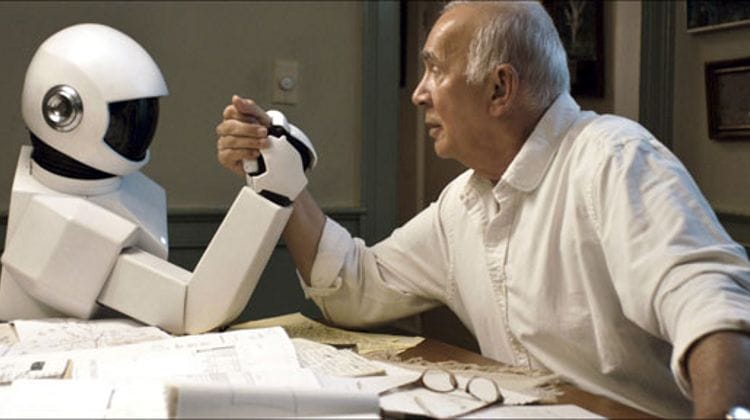Last Updated on 10/04/2019 by Alex Squire
I can’t wait until robots are widely available. I mean real proper robots like you see in films like “I, Robot” and “Robot and Frank”. Robots could really help people with disabilities in a number of different ways.
Robotic Carers
Disabled people could soon have robotic carers looking after them. In a film called “Robot and Frank” a man called Frank had a robot that helped him do all sorts of everyday things like cooking, cleaning and carrying out robberies. It would be great if I had a robot that can do all these things!
They are already being developed, like the “Robear” in Japan, which was built to help look after the countries ageing population.

Robot carers could in theory have certain advantages over human carers. For example, they wouldn’t get tired, so theoretically they could work all day without having a break. Human carers have a limit as to how many hours they can work every day, so I can’t drive them into the ground. It probably wouldn’t be fair!
Another thing is you wouldn’t have to pay them wages. So in the long run they might work out cheaper, although the initial purchase price would probably be a lot. But like all new technology the price will eventually come down. The high cost could prevent a lot of people from being able to buy one, so maybe they could be loaned from a robotic care agency or from the NHS.
You could program the robot to do exactly what you want, and it wouldn’t forget anything. Machines are not susceptible to lapses of concentration like humans are. Depending on how advanced their artificial intelligence is they could learn a lot faster than humans too. They could work things out for themselves, work out the best way to do things and help people to make the best decisions.
However, there is one thing that robots might not be able to replicate. Carers don’t just do physical work they also provide companionship for their clients. For some people their carers may be the only people they see every day. So it’s important they get on well with them. Would it be possible to become friends with a robot? Could they have conversations like humans do? Again this depends on how advanced their artificial intelligence is. A robot carer would not be much good if it had the social skills of a vacuum cleaner. I’ve had one or two human carers like that and it’s not much fun!
“The future is already here, it’s just not evenly distributed yet” –William Gibson
Robotic carers may be a few years off yet, but advanced robots are already here. Take ASIMO for example.
Built by Honda, ASIMO is one of, if not, the most advanced humanoid robots on the planet. It can run, jump, climb stairs, carry cups of coffee, recognise faces and even have a conversation with you (sort of). Check out the video below:
There are many other robot building projects going on as well and lots of equally impressive creations ranging from the cute to the bizarre. Have a look at this page for a list of some of the best ones.
My personal favourite is the NAO robot which not only is really cute to look at but has some impressive tricks as well. I saw one of these at Naidex in Birmingham one year and it danced to Gangnam Style! I really want one but they cost about $8000, which is actually relatively cheap compared to other robots. Its fully programmable so if you know how to code you can get it to do what you want. Probably won’t be able to make you a cup of coffee though.
…and here they are dancing!
Robotic Exoskeletons
Robots are also starting to help disabled people in other forms. Robotic exoskeletons are now available which could help people paralysed from the waist down to walk again. There are a number of these available such as the Hybrid Assistive Limb (HAL) from Japanese company Cyberdyne.
(I’m not sure if Cyberdyne was the best name for the company as it probably reminds people of Terminators. Luckily they are not working on anything called Skynet.)
Here is a video of HAL in action:
Carers could wear robotic exoskeletons to allow them to lift heavy weights safely. Lots of carers suffer from back pain as a result of manual handling. So with the exoskeletons help less strain would be put on the back.
Here is another exoskeleton from Ekso Bionics:
I don’t think they would help me to walk because I don’t have any upper body support and would probably just fall over. Also because I have high muscle tone and get random spasms sometimes the exoskeleton might amplify the effect of it. I might accidentally punch someone, like this:

But you never know unless you try it. So, hopefully sometime I will get to try an exoskeleton and see if it helps me. Or it might just make me smash stuff up, we will see!






No Responses